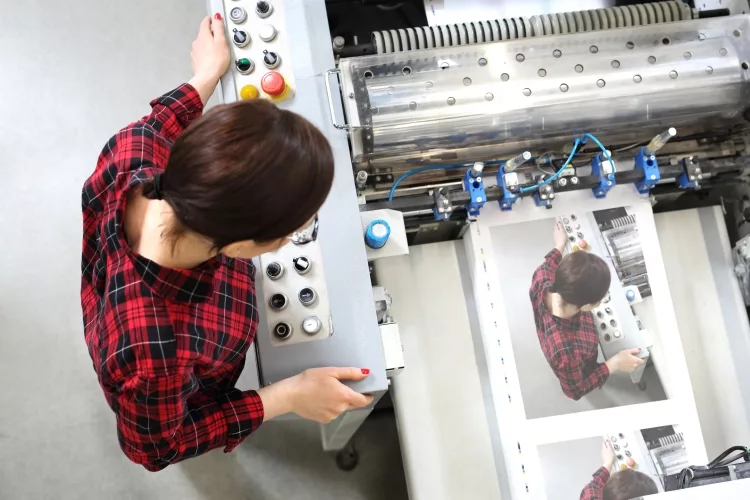Laminator machines are a great way to protect the integrity of important documents. Laminators use heat and pressure from a roller to seal together two pieces of paper, film, or fabric. By sealing these materials together, they provide excellent protection against water damage and other types of wear that can happen in everyday use.
Contents
To Learn More About Laminators and How They Work, Read On!
A laminator machine is a device that will heat up an item and then seal it in plastic. This process creates a waterproof, tear-resistant material that can be used to preserve items for long periods of time. Laminators are generally used for school projects, business cards, posters, documents and more. But there's more you need to know about these machines before using one!

Laminating machines are used to laminate materials. These machines work by first applying hot glue to the surface of one side of a material, then sandwiching it between two sheets of film and pressing them together with pressure rollers. The hot glue melts the film so that they fuse together, creating a waterproof seal. This process can be achieved manually or with an automatic laminator machine which will do all the hard work for you!
Laminating machines are used to make a document more durable, by applying a layer of plastic film to the surface. They work by first feeding paper into one side of the machine, where it is heated and then passed over an open flame that melts the plastic onto the other side. The heat seals both sides together so that they can't be separated without tearing through each page. This process also gives laminated documents their glossy sheen.

A lot of people ask this question, and the answer is that it depends on what kind of laminator you have. If you own a thermal roller laminator, then no. If you own an impulse sealer, yes - it does switch off after every job. The reason for this is to save energy because these types of machines are usually used in offices with many employees who use them often throughout the day!
I'm not sure if you've ever noticed, but the laminator in your school or office most likely does not turn off when it runs out of power. This is because laminators are designed to operate at a constant temperature with no variation

Most laminators require the use of a carrier, but there are some that don't. If you're not sure whether or not your laminator requires a carrier, check the manual or contact the manufacturer. Here's what you need to know about using a laminator without a carrier.
Laminators work by heating up a thin plastic film and then pressing it onto whatever material you're trying to laminate. The heat melts the adhesive on the film and bonds it to the material. Carrierless laminators have a heated roller that does this instead of using heat and pressure.
Carrierless laminators are generally more expensive than ones that require carriers, but they're also more versatile. You can use them to laminate thicker materials, like cardstock or poster board. And, since there's no carrier to worry about, you can laminate uneven or odd-shaped items.
If you're planning on doing a lot of laminating, a carrierless laminator is a good investment. But if you only need to laminate occasional items, a traditional laminator will probably suffice.

No, a laminator does not have to heat up in order to work. There are two types of laminators: cold laminators and hot laminators. Cold laminators use pressure and adhesive to seal documents, while hot laminators use heat to seal documents. Hot laminators are typically faster and provide a higher quality seal, but both types of laminators will get the job done.
If you're working with heat-sensitive materials, a cold laminator may be the better choice. Cold laminating doesn't require any heat, so there's no risk of damaging delicate items.Cold lamination is also a good option if you're wanting to laminate something quickly, as there's no need to wait for the machine to heat up.
Ultimately, the decision of whether to use a hot or cold laminator comes down to personal preference and what material you'll be working with.

The laminator machine is a device that heats up and melts the polypropylene film to create a seal. This creates an instant, tight bond between two pieces of paper or other substrates for increased durability. Laminators are often used in schools as well as offices to protect documents against moisture damage, accidental tearing, dirt buildup, and more. However, you may not know how they work! So let's take a look at this interesting process together now.
 |
 |
 |
 |
 |
 |
 |
 |

About Dror Wettenstein
Dror Wettenstein is a software engineer and entrepreneur with more than 15 years of experience in the industry. He is the founder of TechTreeRepeat, a company that enables technical writers to publish their work faster and share it with readers across the globe. Dror has a master’s degree in computer science from San Diego State University and a bachelor’s degree in physics from UC Irvine.
When he’s not working on software projects, Dror enjoys writing articles and essays on various topics. He also likes playing guitar and spending time with his wife and two young children.
Bonus Deals of the Day
Check the FREE Gifts here. Or latest free books from our latest works.
Remove Ad block to reveal all the secrets. Once done, hit a button below
 |
 |
 |
 |